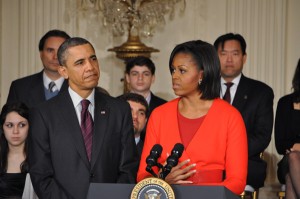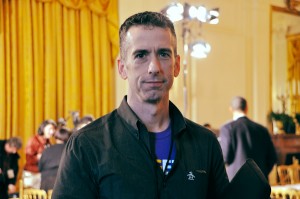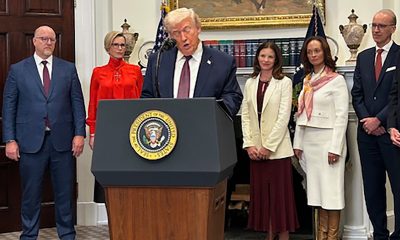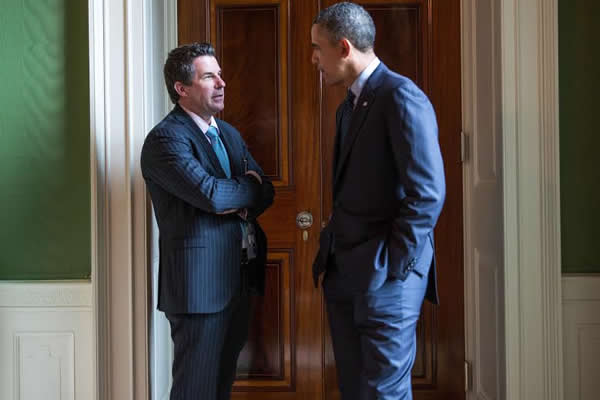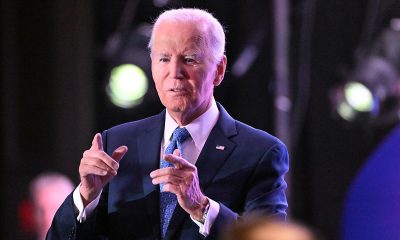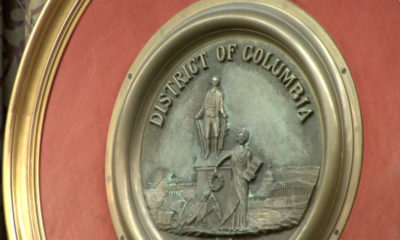National
White House hosts anti-bullying conference
Obama unveils stopbullying.gov as resource to address harassment
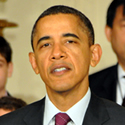
President Obama on Thursday opened the doors of the White House to anti-bullying advocates for a conference in which participants discussed harassment of students and devised strategies to curtail bullying.
In remarks starting off the conference, Obama said if the conference had one goal, it would be dispel the myth that bullying is “a harmless rite of passage or an inevitable part of growing up.”
“It’s not,” he said. “Bullying can have destructive consequences for our young people. And it’s not something we have to accept. As parents and students, as teachers and members of the community, we can take steps — all of us — to help prevent bullying and create a climate in our schools in which all of our children can feel safe; a climate in which they all can feel like they belong.”
The conference, in which around 150 students, parents, teachers and anti-bullying advocates participated, wasn’t specifically directed toward the bullying of LGBT students, although harassment of children because of their sexual orientation or gender identity was often mentioned.
Bullying against LGBT students received renewed attention late last year when several young men who were gay or perceived to be gay took their own lives after they were reportedly bullied. Among them was Tyler Clementi, a Rutgers University student, who leaped off the George Washington Bridge in September after a video was posted online of him reportedly having a sexual encounter with another man in his dorm room.
During his remarks, Obama noted that students who are gay are among the types of children who often face bullying at school.
“A third of middle school and high school students have reported being bullied during the school year,” Obama said. “Almost 3 million students have said they were pushed, shoved, tripped, even spit on. It’s also more likely to affect kids that are seen as different, whether it’s because of the color of their skin, the clothes they wear, the disability they may have, or sexual orientation.”
Obama also announced that his administration had launched a new website, stopbullying.gov, as a resource housed within the Department of Health & Human Services for parents, students and teachers on how to confront the issue of bullying in schools. The website is set to provide information on the risks of bullying and its warning signs and effects.
First lady Michelle Obama, who introduced the president at the start of the event, said the issue of bullying is personal for both her and her hisband because of their concern for their two daughters: Malia and Sasha.
“As parents, this issue really hits home for us,” she said. “As parents, it breaks our hearts to think that any child feels afraid every day in the classroom, or on the playground, or even online. It breaks our hearts to think about any parent losing a child to bullying, or just wondering whether their kids will be safe when they leave for school in the morning.”
Michelle Obama urged parents “to make a real effort to be engaged in our children’s lives” and to listen to them and be there when needed.
“We need to get involved in their schools and in their activities so that we know what they’re up to, both in and out of the classroom,” she said. “And when something is wrong, we need to speak up, and we need to take action.”
Following the president remarks, Valerie Jarrett, senior adviser to the president, led a panel discussion of anti-bullying experts to discuss ways that parents, administrators and government officials can work to curtail harassment of students.
Points that were mentioned included recommending that parents be friends with their children on Facebook for oversight purposes and how the behavior of those who perpetuate bullying must also be addressed as part of anti-bullying efforts.
After the panel, conference participants split into five break-out sessions for more extensive debate on particular issues related to bullying. Topics of the breakout session included cyberbullying and in-school programs to confront bullying.
Top Obama administration officials during a wrap-up session at the close of the conference emphasized the support that anti-bullying advocates have in the White House.
Education Secretary Arne Duncan announced a new initiative — a technical assistance center — which would specifically address harassment to complement anti-bullying efforts that are already underway.
“By trying to highlight these best practices, we will state and local policy makers and educators work to keep children safe and provide the best learning environment for all students,” Duncan said. “We can provide support, which is why I’m happy to announce today our department’s intention to establish a new technical assistance center specifically dedicated to bullying prevention.”
Secretary of Health & Human Services Kathleen Sebelius urged teachers and others to speak out when anti-gay slurs are used in schools.
“Building safe neighborhoods and schools where young people can thrive is a job for all of us,” Sebelius said. “It means speaking out next time you hear a homophobic slur, stepping in when you see someone being preyed upon and letting your local education leaders — from principals to schools — know that bullying is not an isolated part of growing up. It’s a serious danger for all of our children.”
Participants had a largely positive reaction to the event and thought it was productive in devising strategies to thwart bullying.
In a statement, Jeff Krehely, director of the LGBT research and communications project at the Center for American Progress, said the conference “put a national spotlight” on bullying and its potentially “destructive impact.”
“Although the event is born out of tragedies, the conference will hopefully spark a robust national discussion about what we can all do to stop this problem,” Krehely said. “With an increase in bullying and full-on assaults on youth who are perceived to be gay or transgender, as well as those who are perceived to be Muslim, now is the right time to show leadership on this issue.”
Caleb Laiseki, executive director of the Arizona-based Gays & Lesbians United Against Discrimination, said the conference was “much more productive” than he expected.
“I’m coming from Arizona, and Arizona can’t even pass the anti-bullying bill through committee, so I was extremely happy to see the White House was very dedicated to this,” Laiseki said.
Laiseki, who’s 16 and gay, dropped out of high school after he was bullied because of his sexual orientation and completed his education by earning a general equivalency diploma. He founded GLUAD to help address the problems he faced in school.
“The reason I started the organization was because I was pushed into lockers and humiliated,” he said. “I received death threats [and was] followed home. It was just one thing after another. And I also had friend commit suicide after several attempts. So, the main goal of GLAUD is homelessness, suicide prevention and anti-bullying work.”
Laiseki attended the breakout session focused on cyber-bullying and said he proposed that law enforcements have the tools to intervene immediately when such harassment takes place.
“We can immediately track down the [Internet protocol] address and go from there,” Laiseki said. “And both of the representatives [from the Obama administration] were in agreement. And we took notes actually and discussed it for at least one-third of the meeting.”
Dan Savage, founder of the “It Gets Better” online video campaign aimed at helping troubled LGBT teens, said the conference was of “tremendous symbolic importance” because it identified bullying as a national problem, but said more could be done with the issue of parents being the bullies of LGBT youth.
“What was never addressed is when the parents are the bullies,” Savage said. “LGBT kids whose parents reject them are eight times likelier to attempt suicide; kids who are LGBT are four times. It literally doubles the risk of the already quadrupled risk of suicide for LGBT kids when their families reject them.”
Legislation pending before Congress known as the Student Non-Discrimination Act and the Safe Schools Improvement Act would address the issue of LGBT bullying of students in schools. Savage, who’s gay and also a sex-advice columnist, said the passage of this legislation would be effective.
“It puts schools on notice,” Savage said. “It establishes a national sense of accountability. Schools are reactive. They don’t like to be sued. They don’t like to get in trouble with the folks that pay the bills — at the federal or state level — and it really creates a way for school administrators and school boards to be held accountable.”
Shannon Cuttle, director of Safe Schools Action Network, said she felt the event was effective because it drew more attention to the issue of bullying.
“I think that anytime that you can collectively get a group of people to work in collaboration to try to discuss this issue, it’s going to put a dent in the issue,” Cuttle said. “Today is making the right step. Being able to bring people from across America — teachers, administrators, individuals and students — that’s key.”
But Cuttle, a lesbian D.C. activist, said the best way to address the issue of bullying in schools to confront harassment with “boots on the ground.”
“We have to be able to go into the schools, we have to have conversations and we have to be able to discuss the issue,” she said. “We have to be able to have those honest, open conversations with teachers and school administrators, and as parents and students, we need to talk to our school boards and local officials and be able to put rules and policies in place to keep kids safe.”
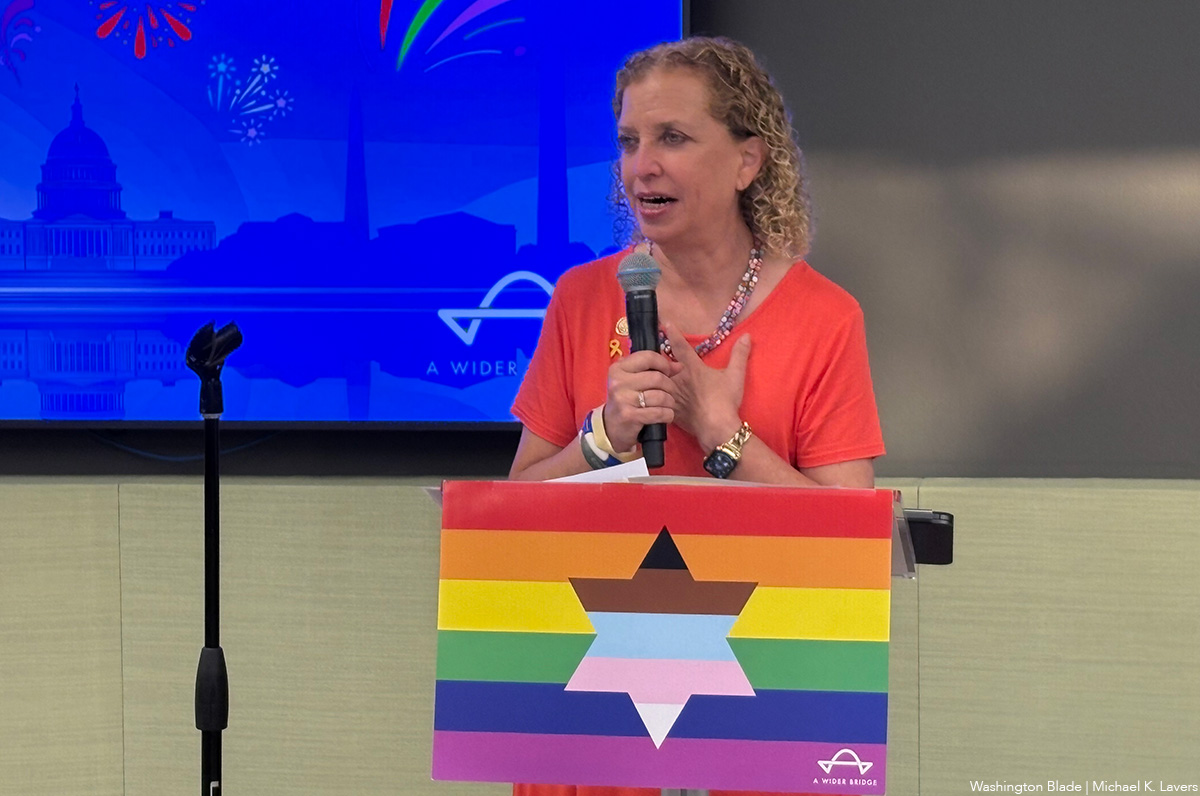
A Wider Bridge on Friday announced it will shut down at the end of the month.
The group that “mobilizes the LGBTQ community to fight antisemitism and support Israel and its LGBTQ community” in a letter to supporters said financial challenges prompted the decision.
“After 15 years of building bridges between LGBTQ communities in North America and Israel, A Wider Bridge has made the difficult decision to wind down operations as of Dec. 31, 2025,” it reads.
“This decision comes after challenging financial realities despite our best efforts to secure sustainable funding. We deeply appreciate our supporters and partners who made this work possible.”
Arthur Slepian founded A Wider Bridge in 2010.
The organization in 2016 organized a reception at the National LGBTQ Task Force’s Creating Change Conference in Chicago that was to have featured to Israeli activists. More than 200 people who protested against A Wider Bridge forced the event’s cancellation.
A Wider Bridge in 2024 urged the Capital Pride Alliance and other Pride organizers to ensure Jewish people can safely participate in their events in response to an increase in antisemitic attacks after Hamas militants attacked Israel on Oct. 7, 2023.
The Jewish Telegraphic Agency reported authorities in Vermont late last year charged Ethan Felson, who was A Wider Bridge’s then-executive director, with lewd and lascivious conduct after alleged sexual misconduct against a museum employee. Rabbi Denise Eger succeeded Felson as A Wider Bridge’s interim executive director.
A Wider Bridge in June honored U.S. Rep. Debbie Wasserman Schultz (D-Fla.) at its Pride event that took place at the Capital Jewish Museum in D.C. The event took place 15 days after a gunman killed two Israeli Embassy employees — Yaron Lischinsky and Sarah Milgrim — as they were leaving an event at the museum.
“Though we are winding down, this is not a time to back down. We recognize the deep importance of our mission and work amid attacks on Jewish people and LGBTQ people – and LGBTQ Jews at the intersection,” said A Wider Bridge in its letter. “Our board members remain committed to showing up in their individual capacities to represent queer Jews across diverse spaces — and we know our partners and supporters will continue to do the same.”
Editor’s note: Washington Blade International News Editor Michael K. Lavers traveled to Israel and Palestine with A Wider Bridge in 2016.
The White House
‘Trump Rx’ plan includes sharp cuts to HIV drug prices
President made announcement on Friday

President Donald Trump met with leaders from some of the world’s largest pharmaceutical companies at the White House on Friday to announce his new “Trump Rx” plan and outline efforts to reduce medication costs for Americans.
During the roughly 47-minute meeting in the Roosevelt Room, Trump detailed his administration’s efforts to cut prescription drug prices and make medications more affordable for U.S. patients.
“Starting next year, American drug prices will come down fast, furious, and will soon be among the lowest in the developed world,” Trump said during the meeting. “For decades, Americans have been forced to pay the highest prices in the world for prescription drugs by far … We will get the lowest price of anyone in the world.”
Trump signed an executive order in May directing his administration “to do everything in its power to slash prescription drug prices for Americans while getting other countries to pay more.”
“This represents the greatest victory for patient affordability in the history of American health care, by far, and every single American will benefit,” he added.
Several pharmaceutical executives stood behind the president during the announcement, including Sanofi CEO Paul Hudson, Novartis CEO Vas Narasimhan, Genentech CEO Ashley Magargee, Boehringer Ingelheim (USA) CEO Jean-Michel Boers, Gilead Sciences CEO Dan O’Day, Bristol Myers Squibb General Counsel Cari Gallman, GSK CEO Emma Walmsley, Merck CEO Robert Davis, and Amgen Executive Vice President Peter Griffith.
Also in attendance were Health and Human Services Secretary Robert F. Kennedy Jr., Commerce Secretary Howard Lutnick, Centers for Medicare and Medicaid Services Administrator Mehmet Oz, and Food and Drug Administration Commissioner Marty Makary.
Under the Trump Rx plan, the administration outlined a series of proposed drug price changes across multiple companies and therapeutic areas. Among them were reductions for Amgen’s cholesterol-lowering drug repatha from $573 to $239; Bristol Myers Squibb’s HIV medication reyataz from $1,449 to $217; Boehringer Ingelheim’s type 2 diabetes medication jentadueto from $525 to $55; Genentech’s flu medication xofluza from $168 to $50; and Gilead Sciences’ hepatitis C medication epclusa from $24,920 to $2,425.
Additional reductions included several GSK inhalers — such as the asthma inhaler advair diskus 500/50, from $265 to $89 — Merck’s diabetes medication januvia from $330 to $100, Novartis’ multiple sclerosis medication mayzent from $9,987 to $1,137, and Sanofi’s blood thinner plavix from $756 to $16. Sanofi insulin products would also be capped at $35 per month’s supply.
These prices, however, would only be available to patients who purchase medications directly through TrumpRx. According to the program’s website, TrumpRx “connects patients directly with the best prices, increasing transparency, and cutting out costly third-party markups.”
Kennedy spoke after Trump, thanking the president for efforts to lower pharmaceutical costs in the U.S., where evidence has shown that drug prices — including both brand-name and generic medications — are nearly 2.78 times higher than prices in comparable countries. According to the Pharmaceutical Research and Manufacturers of America, roughly half of every dollar spent on brand-name drugs goes to entities that play no role in their research, development, or manufacturing.
“This is affordability in action,” Kennedy said. “We are reversing that trend and making sure that Americans can afford to get the life-saving solutions.”
Gilead CEO Dan O’Day also spoke about how the restructuring of drug costs under TrumpRx, combined with emerging technologies, could help reduce HIV transmission — a virus that, if untreated, can progress to AIDS. The LGBTQ community remains disproportionately affected by HIV.
“Thank you, Mr. President — you and the administration,” O’Day said. “I think this objective of achieving the commitment to affordability and future innovation is extraordinary … We just recently launched a new medicine that’s only given twice a year to prevent HIV, and we’re working with Secretary Kennedy and his entire team, as well as the State Department, as a part of your strategy to support ending the epidemic during your term.
“I’ve never been more optimistic about the innovation that exists across these companies and the impact this could have on America’s health and economy,” he added.
Trump interjected, asking, “And that’s working well with HIV?”
“Yes,” O’Day replied.
“It’s a big event,” Trump said.
“It literally prevents HIV almost 100 percent given twice a year,” O’Day responded.
A similar anti-HIV medication is currently prescribed more than injectable form mentioned by O’Day. PrEP, is a medication regimen proven to significantly reduce HIV infection rates for people at high risk. Without insurance, brand-name Truvada can cost roughly $2,000 per month, while a generic version costs about $60 per month.
Even when medication prices are reduced, PrEP access carries additional costs, including clinic and laboratory fees, office visits, required HIV and sexually transmitted infection testing, adherence services and counseling, and outreach to potentially eligible patients and providers.
According to a 2022 study, the annual total cost per person for PrEP — including medication and required clinical and laboratory monitoring — is approximately $12,000 to $13,000 per year.
The TrumpRx federal platform website is now live at TrumpRx.gov, but the program is not slated to begin offering reduced drug prices until January.
The White House
EXCLUSIVE: Democracy Forward files FOIA lawsuit after HHS deadnames Rachel Levine
Trans former assistant health secretary’s name changed on official portrait

Democracy Forward, a national legal organization that works to advance democracy and social progress through litigation, policy and public education, and regulatory engagement, filed a lawsuit Friday in federal court seeking to compel the U.S. Department of Health and Human Services to release information related to the alteration of former Assistant Secretary for Health Adm. Rachel Levine’s official portrait caption.
The lawsuit comes in response to the slow pace of HHS’s handling of multiple Freedom of Information Act requests — requests that federal law requires agencies to respond to within 20 working days. While responses can take longer due to backlogs, high request volumes, or the need for extensive searches or consultations, Democracy Forward says HHS has failed to provide any substantive response.
Democracy Forward’s four unanswered FOIA requests, and the subsequent lawsuit against HHS, come days after someone in the Trump-Vance administration changed Levine’s official portrait in the Hubert H. Humphrey Building to display her deadname — the name she used before transitioning and has not used since 2011.
According to Democracy Forward, HHS “refused to release any records related to its morally wrong and offensive effort to alter former Assistant Secretary for Health Admiral Rachel Levine’s official portrait caption.” Levine was the highest-ranking openly transgender government official in U.S. history and served as assistant secretary for health and as an admiral in the U.S. Public Health Service Commissioned Corps from 2021 to 2025.
Democracy Forward President Skye Perryman spoke about the need to hold the Trump-Vance administration accountable for every official action, especially those that harm some of the most targeted Americans, including trans people.
“The question every American should be asking remains: what is the Trump-Vance administration hiding? For an administration that touts its anti-transgender animus and behavior so publicly, its stonewalling and silence when it comes to the people’s right to see public records about who was behind this decision is deafening,” Perryman said.
“The government’s obligation of transparency doesn’t disappear because the information sought relates to a trailblazing former federal official who is transgender. It’s not complicated — the public is entitled to know who is making decisions — especially decisions that seek to alter facts and reality, erase the identity of a person, and affect the nation’s commitment to civil rights and human dignity.”
“HHS’s refusal to respond to these lawful requests raises more serious concerns about transparency and accountability,” Perryman added. “The public has every right to demand answers — to know who is behind this hateful act — and we are going to court to get them.”
The lawsuit also raises questions about whether the alteration violated federal accuracy and privacy requirements governing Levine’s name, and whether the agency improperly classified the change as an “excepted activity” during a lapse in appropriations. By failing to make any determination or produce any records, Democracy Forward argues, HHS has violated its obligations under federal law.
The case, Democracy Forward Foundation v. U.S. Department of Health and Human Services, was filed in the U.S. District Court for the District of Columbia. The legal team includes Anisha Hindocha, Daniel McGrath, and Robin Thurston.
The Washington Blade reached out to HHS, but has not received any comment.
The lawsuit and four FOIA requests are below:
-

 Politics5 days ago
Politics5 days agoLGBTQ Democrats say they’re ready to fight to win in 2026
-

 District of Columbia4 days ago
District of Columbia4 days agoBrian Footer suspends campaign for Ward 1 D.C. Council seat
-

 Opinions5 days ago
Opinions5 days agoLighting candles in a time of exhaustion
-

 Opinions4 days ago
Opinions4 days ago2026 elections will bring major changes to D.C. government


